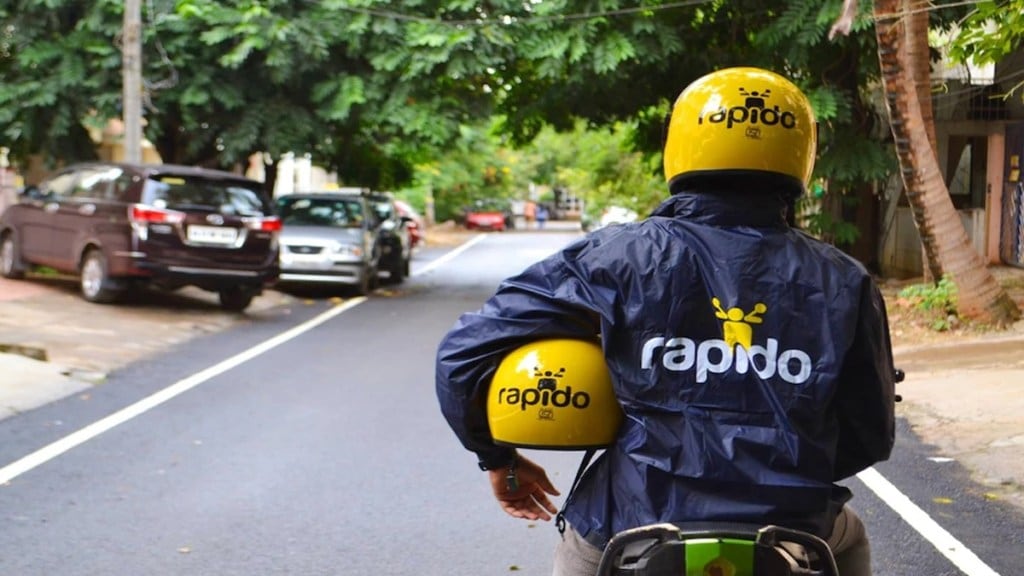Rapido has created a buzz in the food delivery industry with its low commission strategy. Its rates are projected to be nearly half of those being charged by established industry names like Swiggy and Zomato. However, analysts are not convinced.
According to Kotak Institutional Equities, Rapido has a bigger challenge to deal with – customer acquisition. This, according to them, will demand significant capital infusion, extensive discounting, and substantial investment in technology. “Incumbents are deeply entrenched within the restaurant and customer ecosystem and we see a limited threat to the same for now,” the brokerage firm added.
Can Rapido’s commission model cover delivery cost?
According to media reports, Rapido is set to launch its food delivery service with a fixed commission model for restaurants. Kotak Institutional Equities said that while this looks good on paper, Rapido may struggle to cover its delivery costs. It is pertinent for the company to find other monetization avenues—like through ads, lead generation, or higher delivery fees for customers. In the absence of these, it will be difficult for Rapido to even recoup delivery costs.
Kotak raises red flag on profitability
According to the brokerage firm, Zomato and Swiggy incur around Rs 60 per order of the average delivery costs. If Rapido plans to charge a flat Rs 25 on every order up to Rs 400 and Rs 50 on every order above that, it may not be enough to break even.
Kotak said, “We understand that Rapido has an existing fleet of riders available, but given the time-sensitivity of food delivery, it is unlikely the ride-hailing business can significantly optimize the delivery costs for the food delivery business.” Rapido has a 4 million rider fleet, primarily dedicated to bike-taxi services.
Even in high-volume, one-to-many delivery models, such as quick commerce delivery, the cost is Rs 35-40/order, and Kotak Institutional Equities said, it is extremely unlikely that Rapido can bring its cost down to this level.
Customer acquisition: The real test for Rapido
Food delivery majors like Zomato and Swiggy have spent substantial capital in the past on customer acquisition. For instance, in FY2020, Zomato spent approximately Rs 37/order on discounts and other variable costs.
According to calculations by Kotak Institutional Equities, Rapio will now need to invest $30-40 million to achieve even 5 per cent of Zomato’s FY2025 GMV. “This investment will be key, as ultimately the platform needs to have a set of customers on board that can provide relevant orders to restaurant partners,” it said.
In view of this, it will be important that Rapido, as reported by Economic Times, raises a funding of around $15 million. “We reckon it would need to raise more funds to acquire scale in food delivery,” the brokerage firm said.
Can ride-hailing users be converted?
Historically, single apps offering multiple services haven’t worked well in India. For instance, Swiggy started as a single app but has now launched separate apps for Instamart, Snacc and Dineout. Similarly, Rapido will also need to build and promote its food delivery service from the ground up to reach both current and new users.
Interestingly, similar attempts were made in the past as well, by Amazon, Ola and the government-backed ONDC, which failed to gain meaningful share. In a separate report as evaluated by Moneycontrol, HSBC said that while the economics of two-wheeler ride-sharing are comparable to food delivery, maintaining customer experience, execution, and achieving scale remain significant hurdles.
To conclude…
Kotak Institutional Equities expects Zomato to maintain a flat restaurant commission of around 21 per cent from FY26 -FY30, with a slight increase in what it earns from customers. For Swiggy as well, it modeled a flat take rate of 22.2-22.3 per cent over FY2026-30, with some modest increase in customer take rate. “At the moment, we do not see risks to these take rates from Rapido/other competitors. We note similar risks to take rates were discussed in the context of ONDC, but open architecture and customer acquisition were constraints in that model as well,” the Kotak report maintained.
